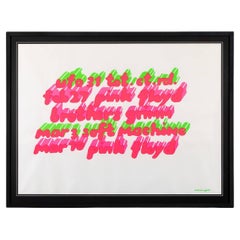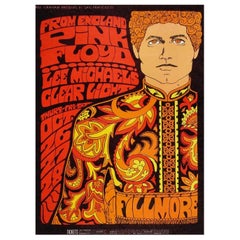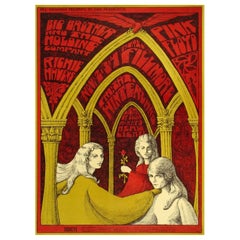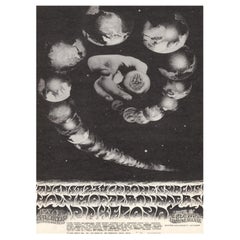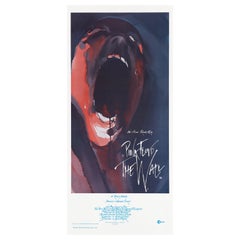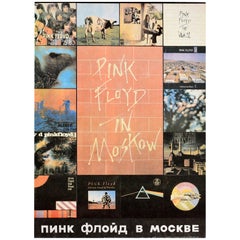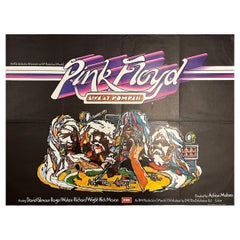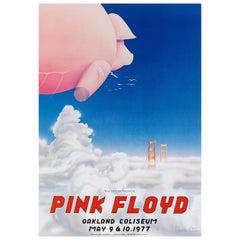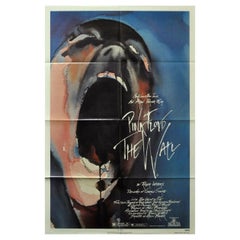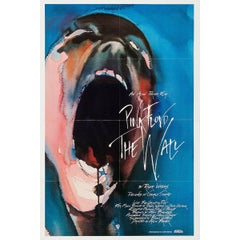Pink Floyd Poster
Vintage 1960s British Modern Posters
Art Glass, Wood, Paper
Vintage 1960s American Posters
Paper
Vintage 1960s American Posters
Paper
Vintage 1960s American Posters
Paper
Vintage 1980s Australian Post-Modern Posters
Paper
Vintage 1960s American Mid-Century Modern Posters
Paper
Vintage 1980s Russian Posters
Paper
Vintage 1970s Posters
Paper
Vintage 1970s American Post-Modern Posters
Paper
Recent Sales
20th Century American Posters
Paper
Vintage 1980s American Posters
Vintage 1980s Great Britain (UK) Posters
Vintage 1970s British Modern Posters
Glass, Wood, Paper
Vintage 1970s American Post-Modern Posters
Paper
Vintage 1980s British Post-Modern Posters
Paper
Vintage 1980s American Post-Modern Posters
Paper
Vintage 1970s American Post-Modern Posters
Paper
Vintage 1980s American Post-Modern Posters
Paper
Vintage 1980s American Post-Modern Posters
Paper
Vintage 1980s German Post-Modern Posters
Paper
Vintage 1970s British Posters
Paper
1990s British Posters
Paper
Vintage 1980s British Post-Modern Posters
Paper
Vintage 1970s American Post-Modern Posters
Paper
Vintage 1970s American Post-Modern Posters
Paper
Vintage 1970s American Post-Modern Posters
Paper
Vintage 1970s German Mid-Century Modern Posters
Paper
Vintage 1980s German Post-Modern Posters
Paper
Vintage 1980s German Post-Modern Posters
Paper
Vintage 1980s German Post-Modern Posters
Paper
Vintage 1980s German Post-Modern Posters
Paper
Vintage 1980s German Post-Modern Posters
Paper
Vintage 1980s German Post-Modern Posters
Paper
Vintage 1970s American Post-Modern Posters
Paper
Late 20th Century Italian Posters
Vintage 1980s Czech Posters
Paper
Vintage 1980s American Posters
Paper
People Also Browsed
Vintage 1960s American Posters
Paper
Vintage 1930s American Posters
Linen, Paper
1990s American Posters
Paper
Vintage 1960s American Posters
Paper
Pink Floyd Poster For Sale on 1stDibs
How Much is a Pink Floyd Poster?
Finding the Right Posters for You
Add a welcome personal touch to your space and tie your distinctive interior scheme together by introducing antique and vintage posters to any and every room of your home.
In the late 19th century, following the advent of text-heavy posters printed from woodblocks for use in taverns and shop windows, hand-drawn poster art had become commonplace in regions such as France, England and the United States. Well-known illustrators were commissioned to produce decorative posters to advertise political campaigns, theatrical events, books, household goods and other items. Early poster artists used a printmaking technique called lithography, which sees drawings or paintings created on a stone (or metal) surface with an oil-based substance, such as a greasy crayon or tusche (an oily wash). The image is eventually affixed to the surface by means of a chemical reaction, and ink adheres to certain sections of the surface while non–image areas are made to repel the ink.
If you wanted a color lithograph in the early days, the number of stones prepared had to match the number of colors you commissioned for the poster. French painter Jules Chéret, widely known as the father of the modern poster, designed some of history's most popular lithographic posters that featured color. Today, Chéret’s art is highly collectible, along with original works by Czech painter and decorative artist Alphonse Mucha, whose posters advertising theatrical productions helped define Art Nouveau.
Over time, poster artists transitioned to more advanced techniques. Using silkscreens, woodblocks and photolithography, painters and illustrators printed larger quantities at a faster rate.
If you’ve finally tracked down that vintage movie poster, mid-century modern promotional travel poster or other work and you’re looking to find out if it is valuable, distinguishing between an original poster and a reproduction can be complicated. A professional appraiser can work with you on factors such as rarity, assessing the physical condition of your poster and authenticating your piece. For now, take care of your new acquisition because conserving posters is essential in helping them retain their value. A practical conservation method is to have the work mounted on archival, acid-free paper and thin artist’s canvas, then enclosing it in a sturdy frame. (And here is a primer on how to hang wall art, be it arranged gallery-style or otherwise.)
On 1stDibs, find all kinds of posters for your home today.
Read More
Whether Painted or Papered, Muraled Walls Make Bold Statements in the Home
The ancient practice of covering walls in artistic scenery is back.
In Francks Deceus’s ‘Mumbo Jumbo #5,’ the Black Experience Is . . . Complicated
Despite the obstacles, the piece’s protagonist navigates the chaos without losing his humanity.
12 Floral-Accented Rooms with a Handmade, Folkloric Feel
Who needs a flower garden? Just use your imagination — and some beautifully patterned wallpaper or fabric — to bring the outdoors in.
This Wolf Kahn Pastel Is the Epitome of Beauty at Its Most Essential
A longtime admirer of Kahn’s work, 1stDibs editorial director Anthony Barzilay Freund explores why it’s relevant now more than ever.
Why Jules Chéret Was the King of the Modern Poster
The streets of fin-de-siècle Paris were set aglow with colorful poster ads, thanks to the printing techniques invented by Jules Chéret. Now, the Milwaukee Art Museum is celebrating this undersung talent in America's first solo show dedicated his exuberant works.
Anna Condo’s Multifaceted Career Spans Film, Photography and NFTs
From her historic Manhattan townhouse, the talented creator and curator of 1stDibs' latest NFT exhibition tells us about the art in her home and how she got involved with cryptoart.
How Keith Rivers Went from NFL Linebacker to Blue-Chip Art Aficionado
The former football player is as serious about becoming a great contemporary-art patron as he once was about making tackles. Here, Rivers tells us how he got the collecting bug and how his tastes have evolved over the years.
More Than Ever, the Female Design Council Is Embracing Funked-Up Creativity
The organization's "Womxn’s History Month" collection celebrates female-identified creators pushing the boundaries of technique and material.
